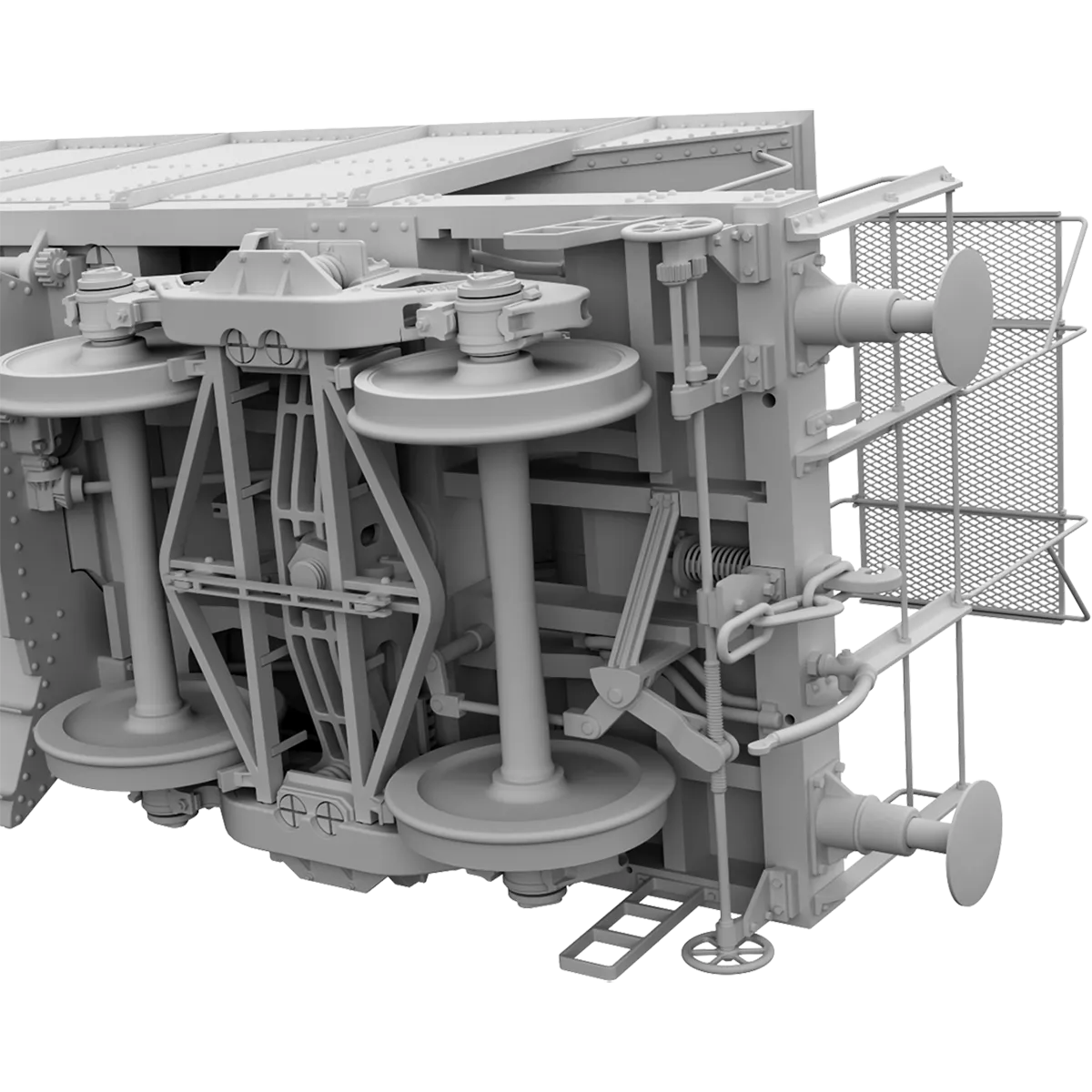Pre-Owned Finescale O Gauge
OO Gauge Projects
Production of our O Gauge ‘Seacow’ and ‘Sealion’ bogie ballast hoppers is currently on hold pending reassessment of market conditions. We hope to reactivate this project – together with our ‘Shark’ ballast brake vans – when circumstances allow. Pre-orders can still be made, with no deposit required.
Scale
7mm Finescale O Gauge
Price
£150 Each
Offers
£140 Each when buying 3 or more
Release Date
Q3/4 202
Variants
4 Liveries
Scale
7mm Finescale O Gauge
Price
£150 Each
Offers
£140 Each when buying 3 or more
Release Date
Q3/4 202
Variants
4 Liveries
Reflecting British Railways’ fondness for naming its engineering vehicles after marine wildlife, hundreds of ‘Seacow’ and ‘Sealion’ ballast hoppers entered service in the 1970s. Many remained in front-line use until 2016, when the final examples were withdrawn.
The key difference between the two types is that ‘Seacows’ are air-braked only while ‘Sealions’ are both air- and vacuum-fitted. With a 40-ton ballast capacity, the hoppers could be seen across the country both singly and in rakes (often paired with a ‘Shark’), making them ideal candidates for O Gauge layouts large and small.
Reflecting British Railways’ fondness for naming its engineering vehicles after marine wildlife, hundreds of ‘Seacow’ and ‘Sealion’ ballast hoppers entered service in the 1970s. Many remained in front-line use until 2016, when the final examples were withdrawn.
The key difference between the two types is that ‘Seacows’ are air-braked only while ‘Sealions’ are both air- and vacuum-fitted. With a 40-ton ballast capacity, the hoppers could be seen across the country both singly and in rakes (often paired with a ‘Shark’), making them ideal candidates for O Gauge layouts large and small.

